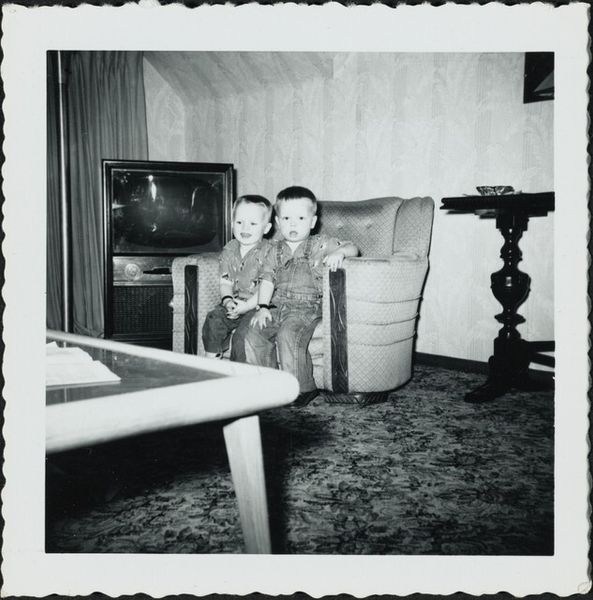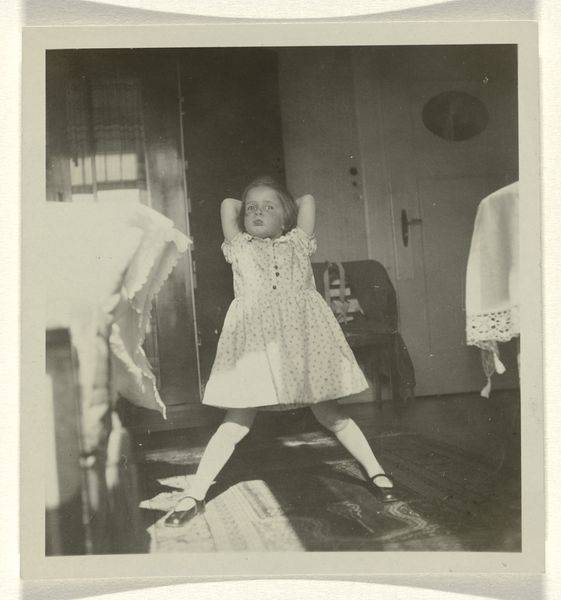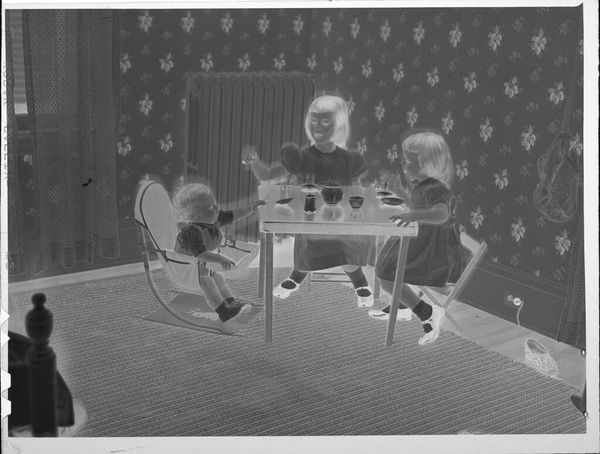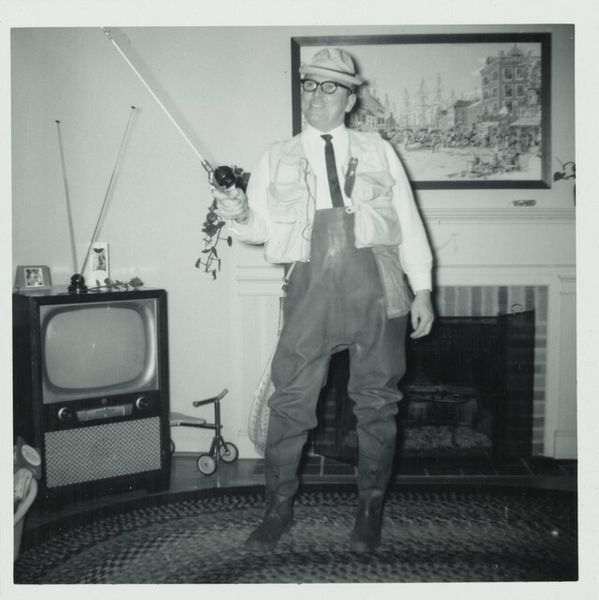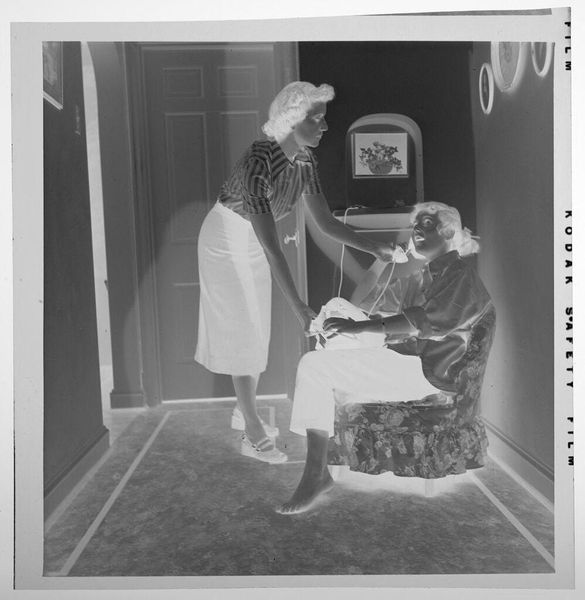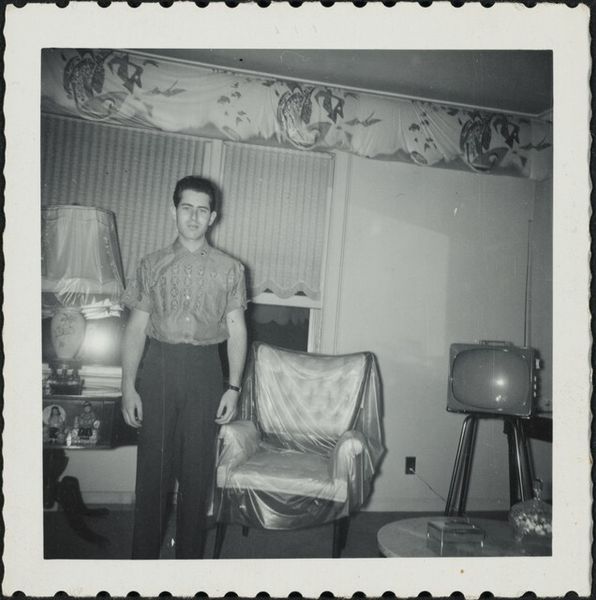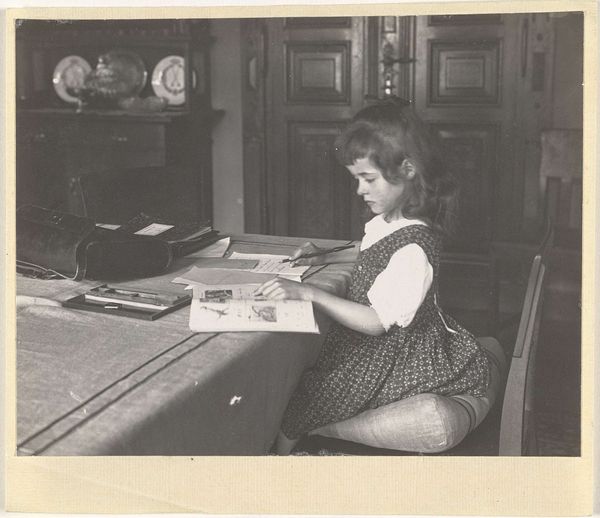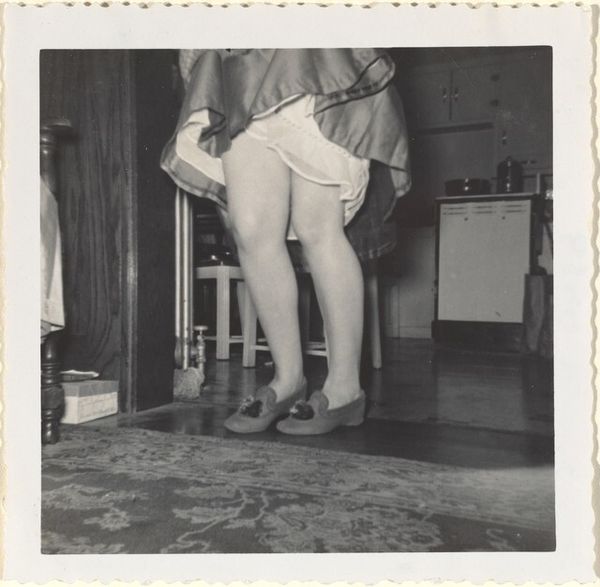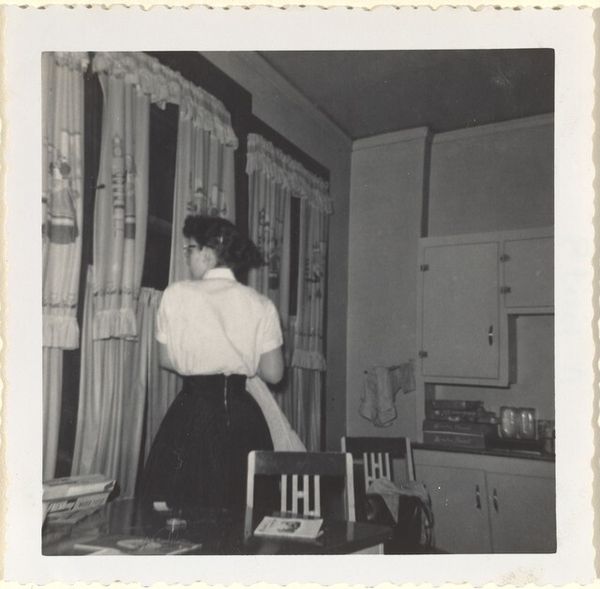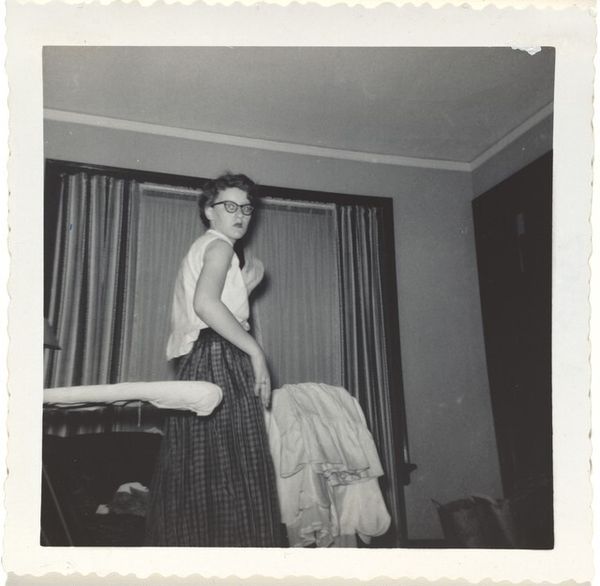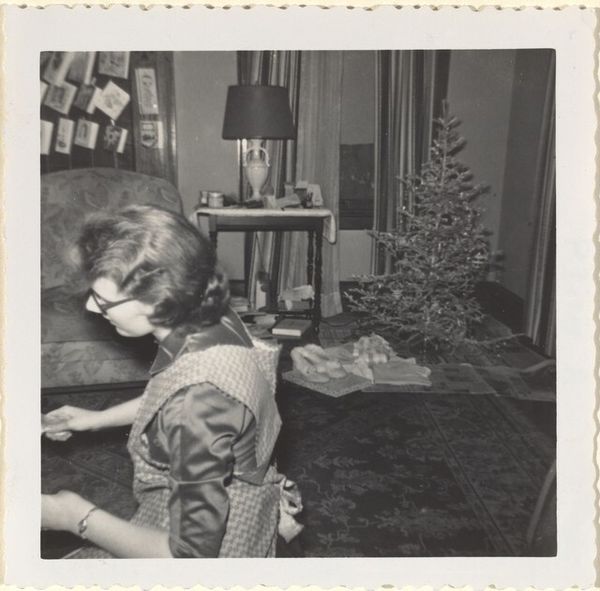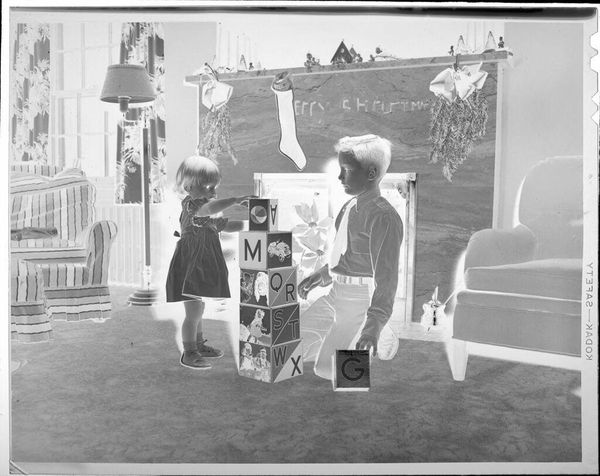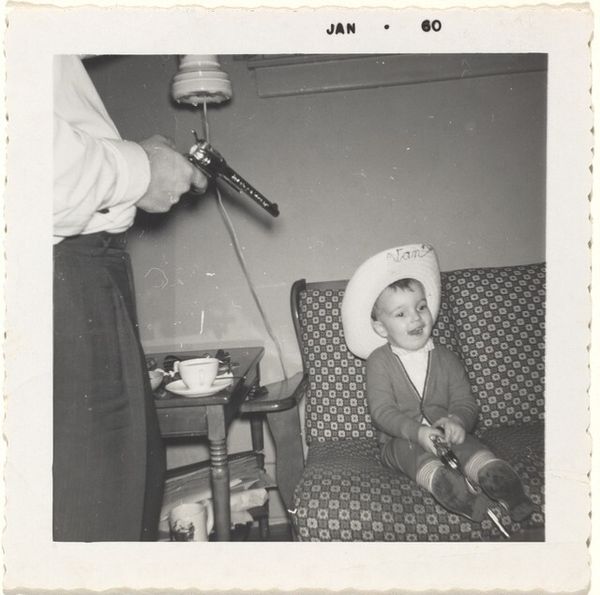
photography, gelatin-silver-print
#
portrait
#
print photography
#
photography
#
gelatin-silver-print
#
genre-painting
#
realism
Dimensions: image: 7.7 × 7.7 cm (3 1/16 × 3 1/16 in.) sheet: 9 × 9 cm (3 9/16 × 3 9/16 in.)
Copyright: National Gallery of Art: CC0 1.0
Editor: This gelatin-silver print, likely from around 1955, is called "Untitled (Girl in living room)." I’m immediately drawn to the domestic scene, it feels so personal and nostalgic. What historical context shapes your interpretation of this work? Curator: It’s a poignant snapshot of mid-20th century family life. Consider the context: the rise of consumer culture after World War II, suburban expansion, and the idealized image of the nuclear family presented in media. Does this scene match that image? Editor: Well, it seems happy, a child playing near a TV and party decorations. But it's black and white, which makes it feel older, perhaps not perfectly aligned with the bright, colourful imagery usually associated with that era. There’s a sort of mundane reality, something very raw here. Curator: Exactly! The realism is crucial. This isn't a staged portrait. It feels like an unmediated glimpse into someone's private sphere. The staircase decked with cards speaks volumes. These personal displays reflected a cultural shift toward showcasing individual experiences and building family narratives. Think about the public role photography began to play. How did accessible photographic technology influence identity? Editor: It democratized image-making, giving ordinary people the ability to document their lives. The cards would showcase status as well as sentimentality. That makes me think about the role of family photographs in constructing memory and reinforcing social norms. Do you think the lack of information about the photographer plays a part in this? Curator: Absolutely. The anonymity allows us to project our own experiences onto the image, amplifying its impact. Consider this work alongside other images from the same era; what narratives are being produced, and what values are being promoted through photography? Editor: That makes me rethink my initial perception. I thought it was simply nostalgic, but it’s more complex when considering social and cultural factors in photography. I'm more mindful about the historical values of documentation! Curator: Precisely. And that’s the power of viewing art through a historical lens – challenging assumptions and uncovering deeper meanings about us and our world.
Comments
No comments
Be the first to comment and join the conversation on the ultimate creative platform.
